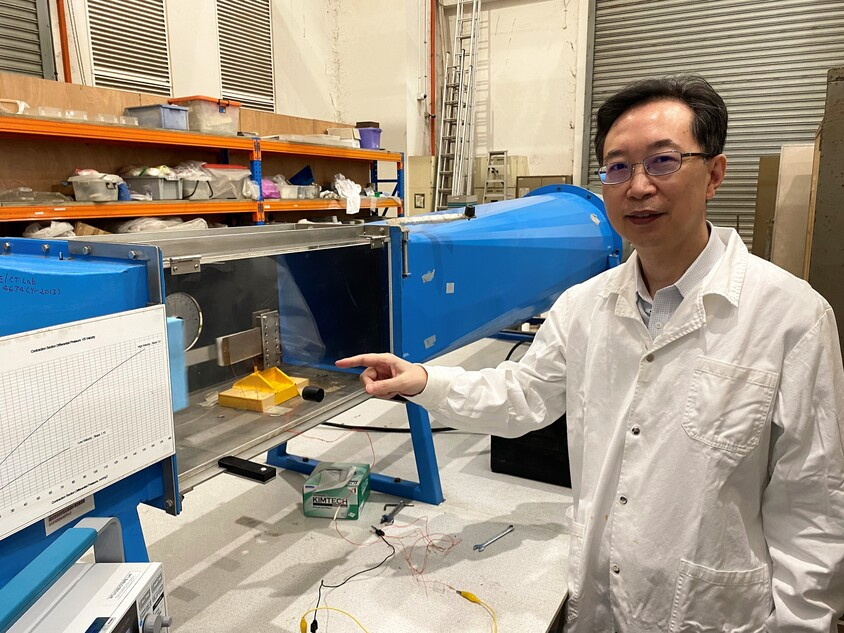Researchers at the Nanyang Technology University (NTU), Singapore, have developed a low-cost, efficient device called Wind Harvester that can extract energy from wind and store it as electricity. They believe this device could replace batteries in health monitoring equipment and LED (Light Emitting Diodes) lights on skyscrapers and bridges.
Image Credits: NTU
Wind harvester features
The device measures 15 centimetres by 20 centimetres and can be installed in urban areas, maybe on roadsides. It can produce a voltage of 3 volts when exposed to winds moving with a velocity of 2 meters per second (m/s). This can generate an energy of up to 290 microwatts which can power a commercial sensor device to work and send data to a mobile or computer. Further, it can store electricity which can be used to power devices in the absence of wind.
“As a renewable and clean energy source, wind power generation has attracted extensive research attention. Our research aims to tackle the lack of a small-scale energy harvester for more targeted functions, such as to power smaller sensors and electronic devices. The device we developed also serves as a potential alternative to smaller lithium-ion batteries, as our wind harvester is self-sufficient and would only require occasional maintenance, and does not use heavy metals, which if not disposed of properly, could cause environmental problems,” said Professor Yang Yaowen, the study’s author.
Unboxing Wind Harvester
The device was made to harvest electricity from wind energy at a low cost with minimum damage. Its body is built of fibre epoxy, a durable composite polymer used for construction purposes, and other materials such as copper, Teflon, aluminium foil, etc. These materials ensure the strength of the device when exposed to winds. And when they strike, the harvester begins to vibrate, and its plate approaches and departs from the stopper. This causes the formation of charges on the harvester’s film, and an electric current is produced that flows from the aluminium foil to the copper film.
Image Credits: Pixabay
During the lab tests, the harvester powered 40 LEDs consistently at a wind speed of 4 meters per second (m/s). It also triggered a sensor device and powered it to send information about room temperature to mobile devices. The experiment demonstrated that the harvester is capable of generating electricity and storing energy that can power electric devices when needed.
“Wind energy is a source of renewable energy. It does not contaminate, it is inexhaustible, and reduces the use of fossil fuels, which are the origin of greenhouse gasses that cause global warming. Our invention has been shown to effectively harness this sustainable source of energy to charge batteries and light LEDs, demonstrating its potential as an energy generator to power the next generation of electronics, which are smaller in size and require less power,” said Professor Yang.
The researchers will work on improving the harvester’s energy-storing functions and try new materials to increase its power output.
The research was published in the journal Mechanical System and Signal Processing.
To ‘science-up’ your social media feed, follow us on Facebook, Twitter, or Instagram!
Follow us on Medium!





2 comments
[…] waste management. The deployment of these alternative battery solutions can pave the way to a more sustainable and environmentally friendly energy storage landscape. In the following section, we list 5 sustainable battery technologies and their […]
[…] production that rely on fossil fuels, nuclear fusion offers a sustainable solution. It produces no greenhouse gas emissions and generates minimal waste. It’s the epitome of a clean and green energy […]